As the cost of living crisis strikes, consumers will change the products they buy, the stores they buy them in, and even eat less (and worse) food
The pandemic is no longer “the dominant factor driving our shopping behaviour” according to Kantar head of retail and consumer insight Fraser McKevitt. Instead, it’s now inflation.
It’s little wonder. The year of the squeeze is upon us. The Office for Budget Responsibility forecasts inflation to average 7.4% in 2022, the highest it’s been in decades, leading to the biggest fall in living standards in any single financial year since ONS records began. Fuel prices have jumped in recent weeks, barely offset by the temporary drop in fuel duty announced by the government. And the raising of the energy price cap this week will see millions of households paying £700 a year more for electricity and gas.
For those already struggling the situation is even more dire. The removal of the £20 universal credit boost in October means “far too many families are already being forced to make impossible decisions between heating and eating,” says Emma Revie, chief executive of food bank charity the Trussell Trust.
More and more consumers now need to watch every penny. So what will they do to survive the squeeze?
Turn to own label
Consumers are increasingly turning to own-label products to save money. According to latest Kantar figures, the proportion of spending on own label versus brands has grown to 50.6%, up from 49.9% this time last year.
Grocers are responding: Asda is launching a 300-strong new budget range called Just Essentials in the coming weeks. It’s “specifically designed” for customers “worried about the cost of living” said owner Mohsin Issa this week.

The flight isn’t just in categories most affected by inflation either. Research from IRI has found shoppers are lowering discretionary spend in areas such as personal care, cream, savoury spreads and premix spirits, where inflation has been negligible.
“We are seeing millions of shoppers adding and dropping brands from their baskets as they’ve been forced to re-evaluate their brand affinities,” says IRI senior VP Kieran South. “These choices aren’t just taking place within categories, but also at a wider level, which will likely result in unexpected and much broader changes to demand.
Chasing perceived value
In further evidence of the flight to value discounters Aldi and Lidl were the only retailers to grow sales in the latest Kantar figures, both boosting sales over the past 12 weeks by 3.6% versus last year. It pushed Aldi to a new record high market share of 8.6%.
“They didn’t have a brilliant pandemic, and they’re opening floor space at a rate no-one else is,” says McKevitt, “but while there’s no conclusive proof, “I don’t think inflation will be hurting their cause.”
But no retailer wants you to think that you’re going to save money if you’re walking out the door to an Aldi. It’s going to be competitive and I don’t think the discounters are going to necessarily have it all their own way,” McKevitt adds.
“The fuel cost of driving to a store is a hidden expense”
Make fewer shopping trips
The discounters are benefiting currently from “growing repertoires” among shoppers – who now visit more stores to complete their grocery mission. But rising fuel prices in recent weeks could curtail this.
“It’s an obvious way to save money – drive less,” McKevitt says, though data is scant on whether it’s having an impact yet. It could push basket sizes up at retailers where a complete shop can be bought.

Shop more online…or in store
Fuel prices could also boost online. Consideration of the delivery fee for an online order will increasingly involve weighing up the cost of driving, as well as convenience factors.
However, a survey by Virtual Store Trials found cost-concerned shoppers (which it says make up more than half of the UK population) are 50% more likely to shop in large stores, compared with online.
“As more people become concerned, more shoppers will migrate their shopping away from online,” says Nick Theodore, Virtual Store Trials CEO. “The fuel cost of driving to a store is a hidden expense; one that doesn’t appear on your receipt when you leave a shop. It’s a reason cost-concerned shoppers are switching back.”
Ditch luxuries and eating out
Inflation is motivating 82% of UK consumers to cut back on non-essentials, according to research from Braze. Three in five of the 2,000 Brits surveyed by the commerce software business said they would be reducing spend on takeaways, and 34% were cutting back on alcohol.
While we’re eating out more than during the pandemic it is “still not up to the levels of 2019” says McKevitt. “A lot of eating out is discretionary. I can choose to take a packed lunch to work,” he says.
Eat less well
Fresh food inflation accelerated in March to 3.5%, up from 3.3% the month before, according to the BRC shop price index. It’s the highest rate since March 2013 and it’s outpacing inflation of pre-packaged food, which was 3% in March.
“We know that people’s diets always suffer when their budgets are challenged,” says Mark Game, CEO of mobile food club The Bread and Butter Thing.
Diets shrink in diversity when finances are under pressure, “so lots of easy carbs but less fruit & veg as it’s more expensive and less filling” he adds.
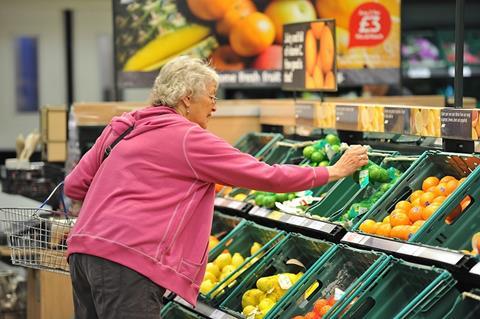
A February survey by Veg Power found 26% had bought fewer fresh vegetables lately due to overall food price increases. “On this evidence, there is a real risk that vegetables will be forfeited when households are confronted by higher bills at the checkout,” says Dan Parker chief executive of Veg Power.
Academic research backs this up. One common “coping strategy” used by struggling households is “a switch to cheap, ultra-processed food, calorie-dense diets, less consumption of fresh fruits & vegetables as they are costlier in comparison” says Lopa Saxena from Coventry University.
The energy required to cook veg is also having an impact. “We have heard anecdotally that some people needing support from food banks in our network are unable to accept food parcels containing root vegetables such as potatoes because they’re worried about the energy needed to cook them,” says Revie. “This is not okay.”
Or not at all
Another strategy is a straightforward reduction in food intake. The very worst off “may eat less – with much smaller portion sizes – or eat less frequently, going from three meals to one meal a day” Saxena says.
In a recent FSA survey of UK households, 6% had very low food security, meaning reduced food intake and disrupted eating patterns [Ipsos MORI]. February research from the Food Foundation found 3.6% of the population – some one million adults – reported going a whole day without eating in the past month because they couldn’t afford or access food.
Shop at social supermarkets, or seek out free food
Increasing numbers of people are tapping the heavily discounted social supermarkets. They have experienced a “sharp rise” in customers in recent months, says Saxena. And not just from the unemployed.
“The plight of the ‘working poor’ and ‘just about managing’ families will also take a turn for the worse because of food inflation and the cost of living crisis,” she says.
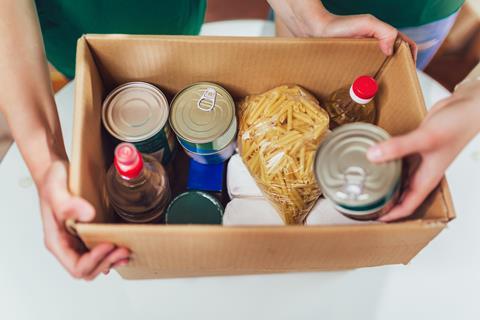
Through last year The Bread and Butter Thing was taking on 700 new members a month. “When the cut in Universal Credit happened this jumped to 1,400 a month and it is still growing at this rate,” says Game. Many hubs are already “vastly oversubscribed”.
Waste food sharing apps, which allow users to source free food in their local area, are also seeing a surge. “With the cost of living crisis really starting to kick in, we’ve seen a significant increase in demand,” says Olio co-founder Tessa Clarke, from both businesses and “members of the community looking for free food to help feed their families”.
Go into debt
In October last year, 14% of UK households had used credit for essentials including food in the previous four weeks, research from the University of Bristol found. More than half of households already in arrears had.
Iceland in January began offering “ethical and affordable” loans to hard-pressed shoppers.
The situation is likely to get worse. Recent polling by debt charity StepChange found 11% of Brits were worried the rising costs of food and fuel would tip them into debts they wouldn’t be able to repay. An additional 24% felt they may incur debt but would cope.
Although data on groceries driving people into debt is limited “there are several alarm bells” says StepChange’s Sue Anderson. “One is the general rise that we’re seeing in people using credit to pay for essentials – this is often an indicator of an unsustainable budget and a growing debt burden. Another is the rise of payment mechanisms such as buy now, pay later, to pay for groceries – again, suggesting an affordability issue,” she adds.







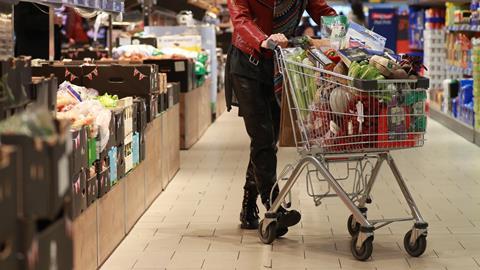
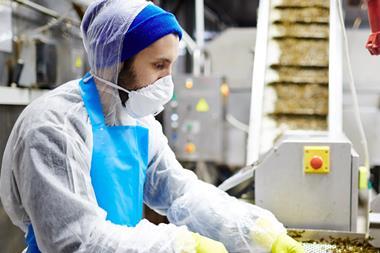
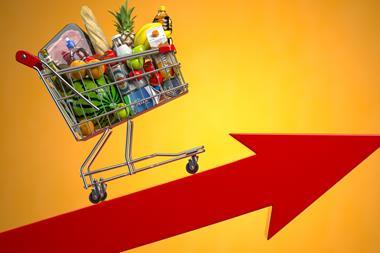
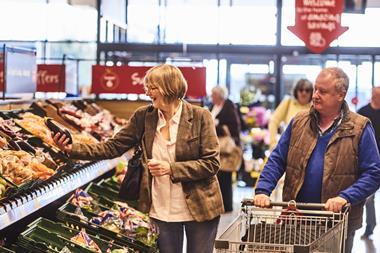
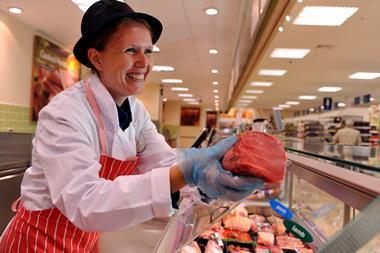







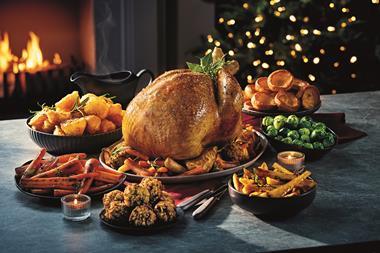
1 Readers' comment